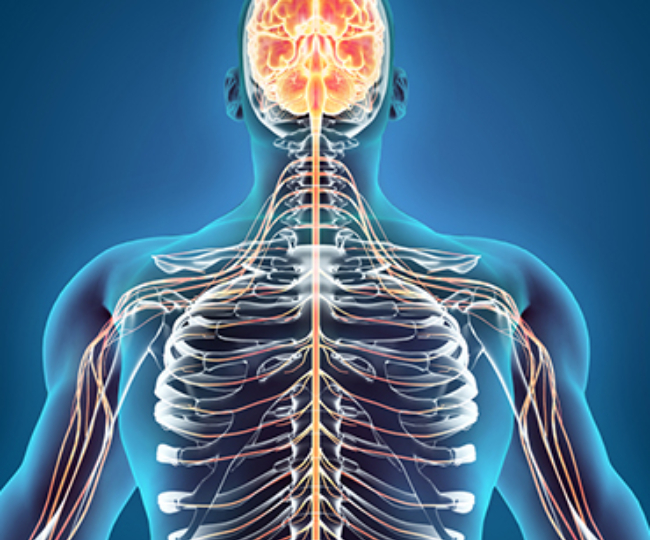Central Cord Syndrome
Central Cord Syndrome

Central Cord Syndrome (CCS) is an incomplete injury to the cervical cord resulting in more extensive motor weakness in the upper extremities than the lower extremities. The mechanism of injury occurs from a hyperextension injury with pre-existent osteophytic (abnormal bony outgrowth) spurs, without damage to the vertebral column.
Mechanism and Causes of Injury
CCS occurs typically in patients with hyperextension injuries where the spinal cord is squeezed or pinched between anterior cervical spondylotic bone spurs and the posterior intraspinal canal ligament, the ligamentum flavum.
The injury occurs as a result of anterior and posterior compression of the spinal cord, leading to edema, hemorrhage or ischemia to the central portion of the spinal cord. The site of most injuries is in the mid-to-lower cervical cord. Due to the anatomical lamination of the corticospinal tract with the arm fibers medially, and the leg fibers laterally, the arms are affected more so than the legs, resulting in a disproportionate motor impairment.
Symptoms
Patients are typically left with motor weakness of the upper extremities and lesser involvement of the lower extremities. A varying degree of sensory loss below the level of the lesion and bladder symptoms (urinary retention) may both occur.
Diagnosis
Evaluation of the patient includes a complete history, a thorough neurological exam, MRI and CT of the cervical spine, and cervical spine x-rays including supervised flexion and extension x-rays.
- Magnetic resonance imaging (MRI): A diagnostic test that produces three-dimensional images of body structures using powerful magnets and computer technology; can show direct evidence of spinal cord impingement from bone, disc, or hematoma.
- X-ray: Application of radiation to produce a film or picture of a part of the body can show the structure of the vertebrae and the outline of the joints. X-rays of the spine delineate fractures and dislocations, as well as the degree and extent of spondylitic changes. Flexion/extension views assist in evaluation of ligamentous stability.
Surgical Treatment
Acute surgical intervention is not usually necessary unless there is significant cord compression.
Nonsurgical Treatment
Nonsurgical treatment consists of immobilization of the neck with a cervical orthosis, steroids unless contraindicated, and rehabilitation with physical and occupational therapy.
Outcome
Many patients with CCS make spontaneous recovery of motor function while others experience considerable recovery in the first six weeks post injury.
If the underlying cause is edema, recovery may occur relatively soon after an initial phase of motor paralysis or pareses. Leg function usually returns first, followed by bladder control and then arm function. If the central lesion is caused by hemorrhage or ischemia, then recovery is less likely and the prognosis is more devastating.
The prognosis for CCS in younger patients is favorable. Within a short time, a majority of younger patients recover and regain the ability to ambulate and perform daily living activities.
